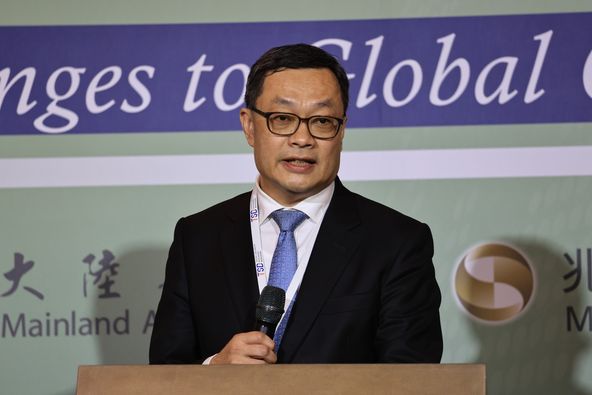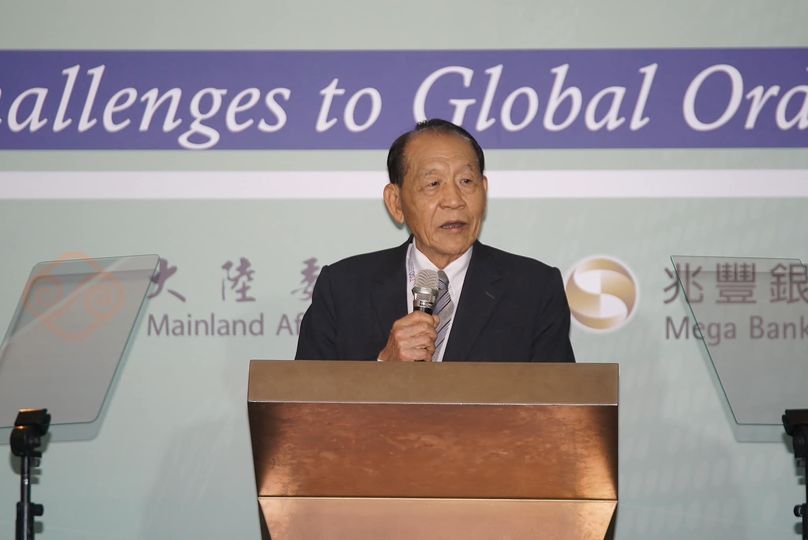Taiwan jet trainers keep wartime role in reserve
Original text from: AsiaTimes
By KG CHAN
Published JUNE 23, 2020
By KG CHAN
Published JUNE 23, 2020
 A Brave Eagle jet trainer prototype on display. Photo: Handout
A Brave Eagle jet trainer prototype on display. Photo: HandoutThe maiden flight of Taiwan’s next-generation indigenous jet trainer, the Brave Eagle, sends a strong message to Beijing in a month when more Chinese warplanes have been spotted in the island’s airspace.
Taiwan’s Defense Ministry hailed the supersonic, fifth-generation trainer aircraft, designed and built locally, as the linchpin of the island’s renewed bid to boost its air power.
The aircraft is arguably the most advanced of its kind in an Asian air force and comes close to parity with the US’s T-7 Red Hawk jet trainer.
Other than for grooming pilots, the fleet of 66 Brave Eagles can be easily converted into fully-fledged fighters to respond to contingencies. The aircraft was designed from the beginning for peacetime training and wartime combat.
“The new trainer has advanced digital hardware and flight simulation software and is more powerful than most fourth-generation fighters in service,” Su Tzu-yun, a research fellow at the island’s Institute for National Defense and Security Research, told the semi-official Central News Agency.
The Brave Eagle is equipped with a fully digitized cockpit and its software is capable of simulating a whole host of reconnaissance, blitz and dogfight scenarios and can calibrate training courses more precisely.
These features, says Su, put the Taiwanese jet trainer at a notch above the People’s Liberation Army’s JL-10, JL-9 and JL-9G, even though these trainers are usually categorized as the same class by military analysts.
Retired Air Force Deputy Commander Lieutenant General Chang Yen-ting also revealed that the Brave Eagle would be capable of providing air support against hostile targets at sea and on land and can carry missiles and bombs.

Taiwanese President Tsai Ing-wen attends the inaugural flight of the Brave Eagle on Monday at the Ching Chuan Kang airbase in the central Taiwanese city of Taichung. Photo: Handout
The Brave Eagle series is designed and manufactured by the government-owned Aerospace Industrial Development Corp, in a NT$66.8 billion (US$2.23 billion) program launched in 2017.
Despite the emphasis on self-reliance, Taiwan still relies on the US to furnish key parts, including engines. The new trainers are powered by Honeywell/ITEC F124 engines, also used on Boeing’s conceptual X-45, a next generation of completely autonomous military aircraft.
Mass production of the Brave Eagle is due by 2022 to replace the outmoded AT-3 and F-5 trainers which have served the military for more than three decades.
Taiwan is grappling with a pilot crunch as it aims to take delivery of 66 F-16 jets from Lockheed Martin starting from 2023.
The Central News Agency said that on the strength of the Brave Eagle’s fully digitized cockpit, cadet pilots who complete their courses can seamlessly switch to training for the F-16Vs, the latest variant featuring a new radar, electronic warfare suite and automated ground collision avoidance system.

The cockpit of the tandem trainer is similar to that of the F-16, including an aft-seat 4K ultra HD HUD monitor showing the front view for the back-seat co-pilot and it allows him to take over the control in any emergency, one of the latest additions to the F16-V variant.
Meanwhile, the island’s Defense Ministry has confirmed eight breaches of its airspace by the PLA this month, including incidents in which Chinese warplanes inadvertently crossed the centerline of the Taiwan Strait and strayed close to the island’s west coast.
The ministry said normally it would deploy F-16s to intercept but with the introduction of the Brave Eagle, pilots on the new trainers will gain more experience when engaging and facing off their Chinese rivals. Military aircraft cannot attack a trainer jet under international law.



